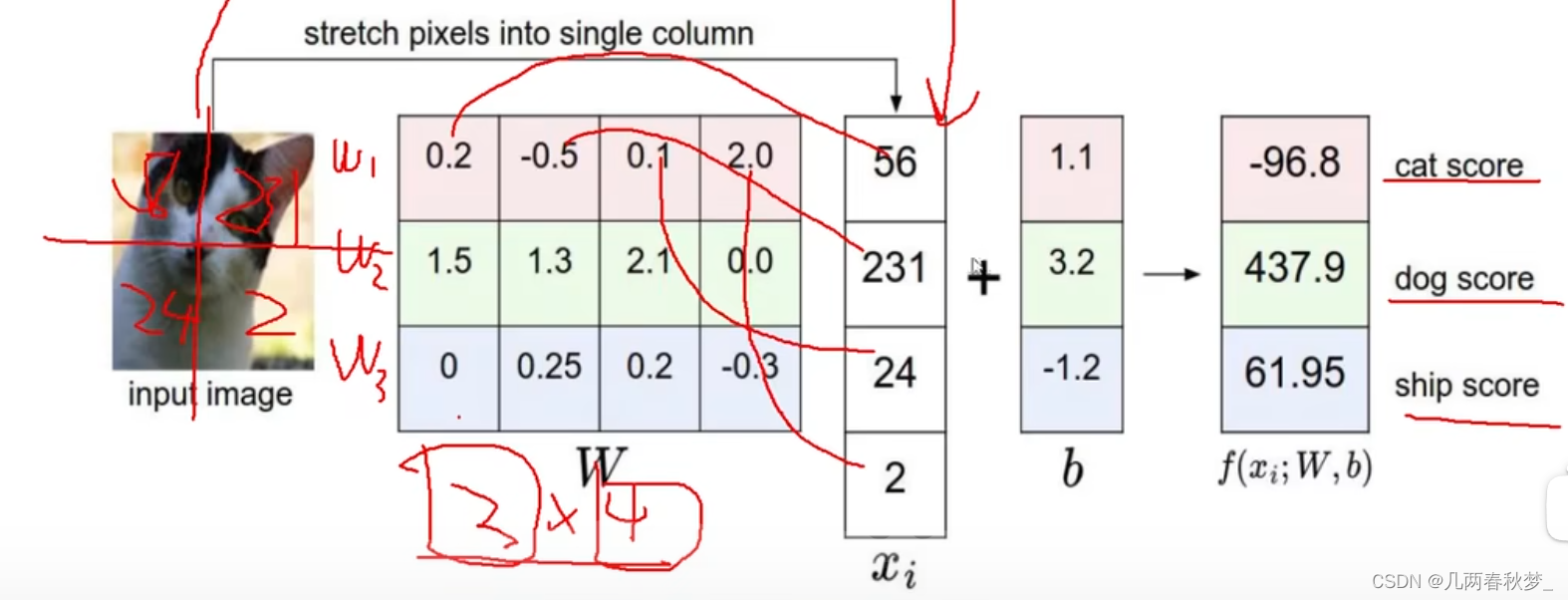Table of contents
1. The role of feature engineering
2. Application of deep learning
1. The role of feature engineering
- Data characteristics determine the upper bound of the model
- Preprocessing and feature extraction are the core
- Algorithm and parameter selection determine how to approach this upper bound
2. Application of deep learning
- unmanned
- face recognition
- Resolution reconstruction
Deep learning In image classification, a picture is represented as a three-dimensional array, and the value of each pixel is 0 to 255
3. Score function
Linear function: mapping from input --> output
Mathematical representation: f(s,W) = Wx + b
b is a fine-tuning parameter

There are a total of three categories and four pixels. When calculating the weight value (taking cats as an example): 0.2*56+-0.5*231+0.1*24+2.0*2+1.1
4. Loss function

Loss function = data loss + regularization penalty

Model A focuses on the local area, while model B focuses on the overall situation, and model A is prone to overfitting
5. Forward propagation

There is an input data x and a weight parameter W, the score value is calculated according to f = Wx, and a data loss function is selected plus a regular penalty term (R(W)) to obtain a loss value.
6. Backpropagation
Simple example:

The influence of the result of finding x shows that f takes the partial derivative of the intermediate variable q, and then q takes the partial derivative of x, and then multiplies
